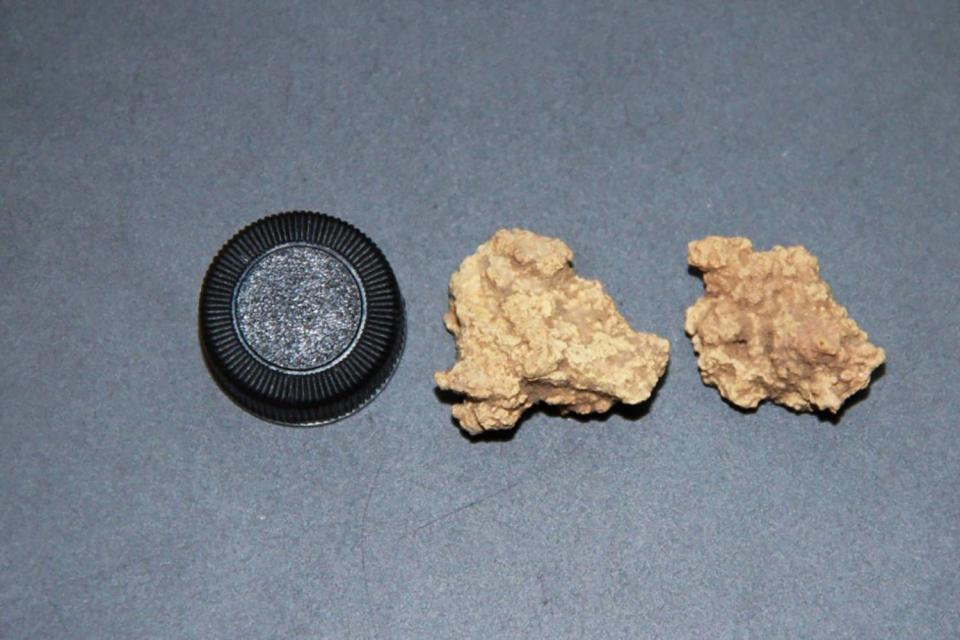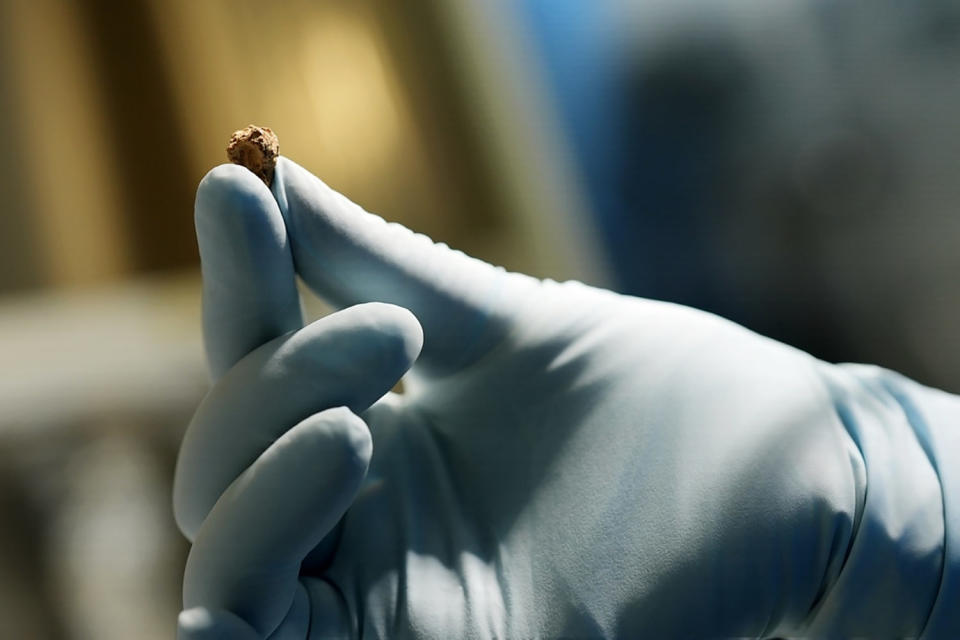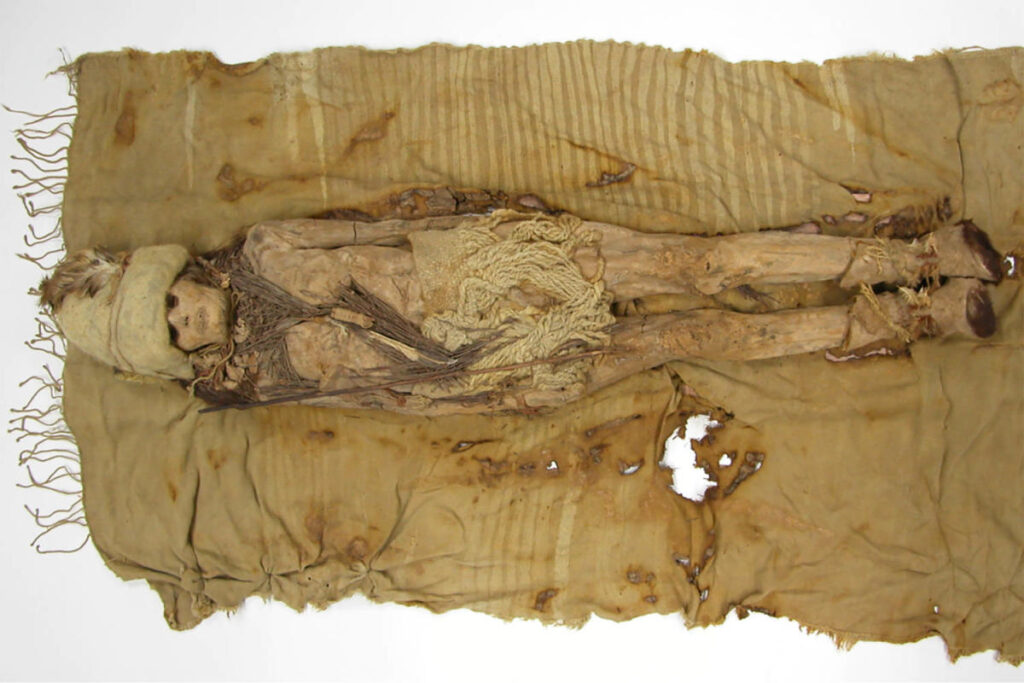HONG KONG — When the 3,600-year-old coffin of a young woman was unearthed in northwest Hong Kong, China Twenty years ago, archaeologists discovered a mysterious substance lying like a jewel around her neck.
It was made of cheeseand scientists now claim it is the oldest cheese ever found.
“Normal cheese is soft. This is not. It has really become dry, dense and hard stuff,” said Fu Qiaomei, a paleogeneticist at the Chinese Academy of Sciences in Beijing and co-author of a study published Tuesday in the diary cell.
A DNA analysis of the cheese samples, she told NBC News in a telephone interview Thursday, tells the story of how the Xiaohe people — from what is now known as Xinjiang — lived and the mammals they interacted with. It also shows how animal husbandry developed across East Asia.


The Bronze Age coffin was discovered during excavations at Xiaohe Cemetery in 2003.
Fu said the woman’s coffin was well preserved because it was covered and buried in the dry climate of the Tarim Desert. Her boots, hat and the cheese that adorned her body were also well preserved.
Ancient burial rituals often included items that were meaningful to the person buried next to them. The fact that those items included chunks of kefir cheese next to the body showed that “cheese was important to their lives,” she added.
The love for cheese has existed for thousands of years.
Its production was depicted on wall paintings in ancient Egyptian tombs as early as 2000 BC. Traces of the practice have been found in Europe dating back almost 7,000 years. However, scientists say the samples from the Tarim Basin are the oldest cheese samples ever found.
Fu and her team took samples from three graves in the cemetery, then processed the DNA to trace the evolution of the bacteria over thousands of years.
They identified the cheese as kefir cheese, which is made by fermenting milk using kefir grains. Fu said they also found evidence of goat and cow milk being used.
The journey of the cheese led them to follow the journey of the kefir culture, which is used to make the final cheese.


The study also found that the Xiaohe people, who were known to be genetically lactose intolerant, consumed dairy before the era of pasteurization and refrigeration, because cheese production reduces lactose content.
Previous research has shown that kefir spread from the Northern Caucasus in present-day Russia to Europe and beyond. However, the research shows that it also spread to inland Asia via another route: from present-day Xinjiang via Tibet. This provides crucial evidence for how Bronze Age populations interacted with each other.
The DNA analyzed by Fu’s team also suggested that the strains of bacteria developed resistance to antibiotics as they became more popular over the years. “Nowadays, they’re actually very drug-resistant,” Fu said.
But it also showed how the bacteria that would have previously triggered immune system responses in humans also adapted. “They are also good for the immune system and for producing antibodies. We can see that at some point they adapted to humans.”
The study found that the evolution of human activities over thousands of years also influenced the evolution of microbes. Reference was made to the divergence of a bacterial subspecies that was facilitated by the spread of kefir among different populations.
Asked if the kefir cheese was still edible and if she wanted to try it, Fu was less enthusiastic. “No way,” she said.
This article was originally published on NBCNews.com







